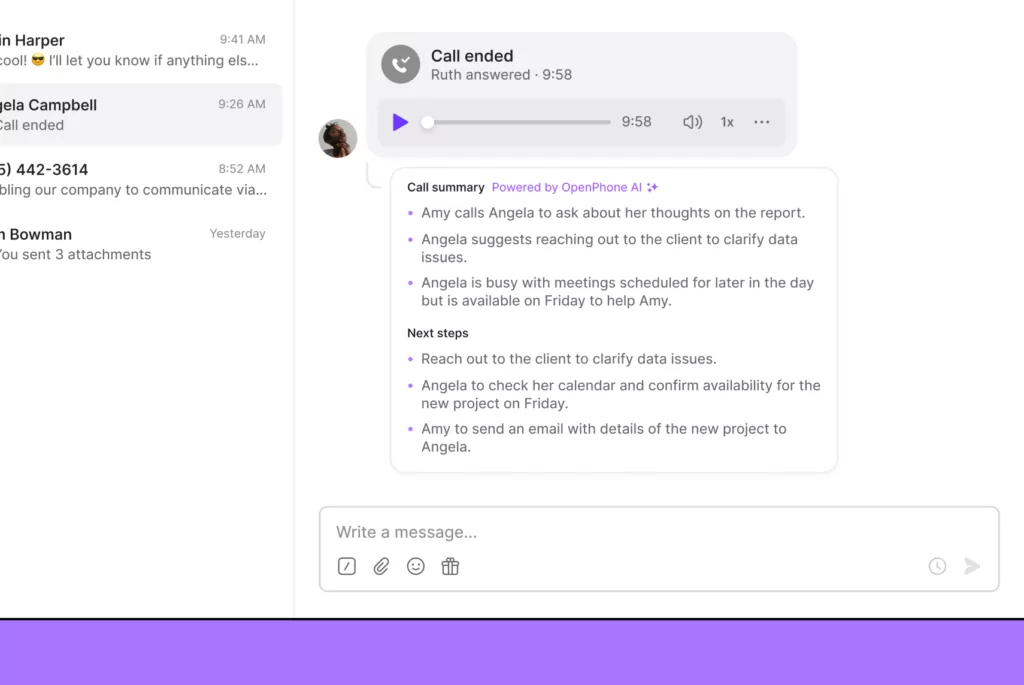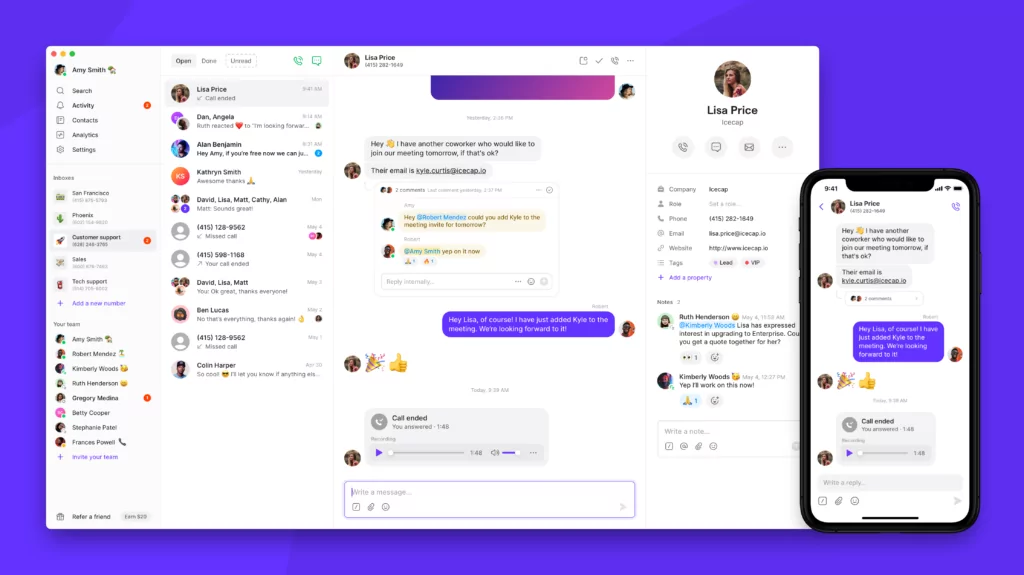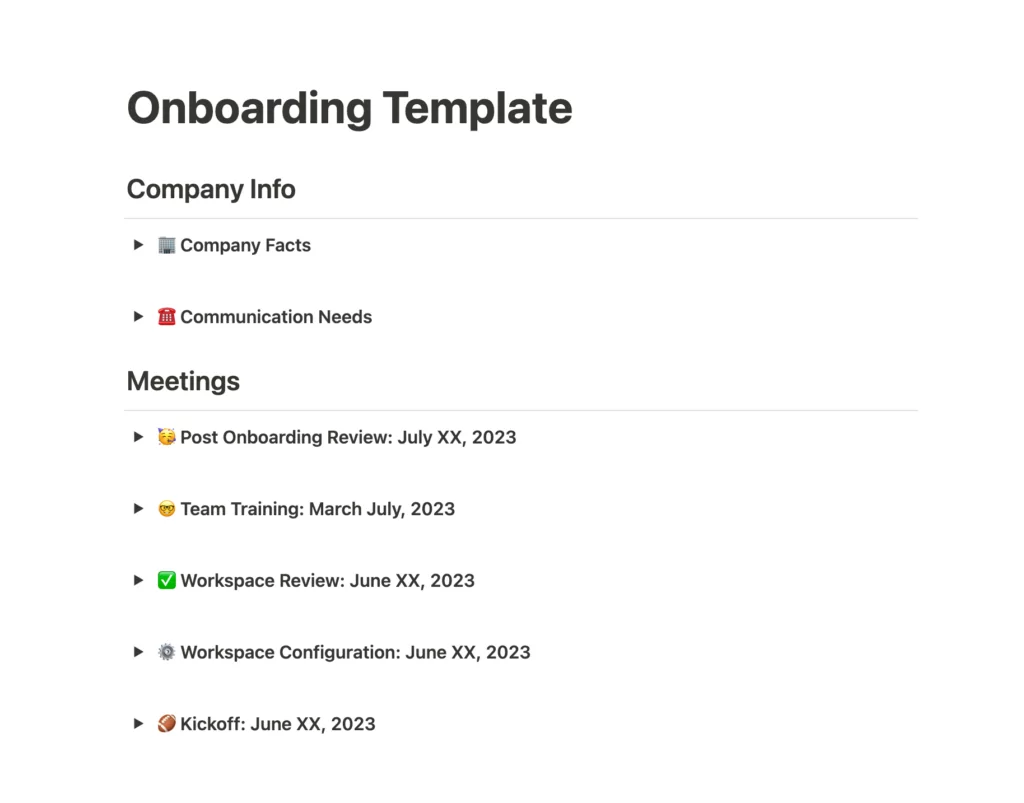In many ways, developing strong client relationships is a lot like cultivating a garden. Both require patience, care, and consistent effort. Each requires you to put in the work long before you see the results of your efforts. And when client relationships become strong and bear fruit, they help plant the seeds for more client relationships through referrals.
In this article, we’ll help you nurture your own client relationships by sharing six research-backed tips from the work of Dr. Robert Cialdini, an expert in the science of influence and persuasion, as well as five practical recommendations from OpenPhone’s own Customer Success Manager, Natalie Baran-Chong.
The principles of influence
Dr. Robert Cialdini is the Regents’ Professor Emeritus of Psychology and Marketing at Arizona State University. He’s well-known for his research in social psychology, specifically around the concepts of influence and persuasion.
In his book, Influence: The Psychology of Persuasion, Dr. Cialdini breaks down six principles of influence and persuasion: reciprocity, consistency, liking, scarcity, authority, and consensus.
Below, we’ll dive into each of these principles and explain how they can be applied to building strong client relationships.
1. Offer value to clients upfront with the reciprocity principle
The reciprocity principle states that people feel obligated to return favors or concessions when they’ve received one themselves.
You’ve likely been on the receiving end of the reciprocity principle before without realizing it. Every time a charity mails you free, personalized address labels or a waiter drops free mints or an after-dinner digestif off at your table, they’re increasing the likelihood you’ll respond in kind, with either a donation or a bigger tip.
By providing value to someone early on, you increase the likelihood they’ll reciprocate in the future. You can leverage the principle of reciprocity — and impress your clients — by providing extra value to them upfront. For instance, if you’re a realtor, don’t just show your client their dream house. Offer to take your client out to coffee beforehand so they can check out the surrounding neighborhood too.
Personalized gestures can also go a long way when it comes to building strong business relationships with your clients. Send them a handwritten card welcoming them to your business to start your working relationship off on the right foot. You could also send them a box of cookies and a handwritten card during the holidays to thank them for their business and help develop a long-term relationship.
Pro tip: Give your clients what they want ASAP
At OpenPhone, Natalie uses the reciprocity principle by asking new business customers, “What’s one thing you’d like to get out of OpenPhone immediately?”
Once Natalie finds out, she explains to customers how they can achieve that goal immediately. Or, if the explanation is more involved, she records a short Loom video for them after the call explaining how they can use OpenPhone’s features to achieve their goals.
2. Hold clients accountable with the consistency principle
According to Cialdini, people usually want their current actions to be consistent with their previous commitments, values, and actions. Once someone has made a public or written commitment, they’re more likely to follow through so they align with their earlier statements or actions.
To learn just how strong the consistency principle is, all you have to do is look at a study of bettors at a horse racetrack: researchers found that individuals were more confident in their horse’s chances of winning immediately after they’d placed a bet than just before. The sheer act of betting $2 on their horse made them more confident their horse would win. As Cialdini notes:
“It’s the same horse, on the same track, in the same field, but in the minds of those bettors, its prospects improve significantly once that ticket is purchased.”
Fortunately, the consistency principle holds just as strong for client management. Leverage the principle by:
- Asking clients early on what their goals are in working with you
- Ensuring your approach aligns with those goals
- Reminding clients of those goals consistently
For instance, if you’re an accountant, a client might have a personal financial goal they’re hoping to meet. If you’re a personal trainer, your clients likely want to achieve a fitness goal. As clients work with you, you can build a better relationship with them by reminding them why they chose to work with you in the first place. This can help you hold them accountable to working with you consistently — especially when the goals they’re working toward might take more time to achieve.
As Cialdini explained to W.P. Carey News: “You don’t create a commitment inside people that they don’t already have. But you can look for commitments that they’ve already made, and then you can align your requests with that, so what you’re offering them gives them precisely what they’re looking for in a business partner.”
3. Build rapport with clients with the liking principle
The liking principle is pretty straightforward: if you like someone, you’re more likely to be influenced by them. It’s why most people will go to friends, colleagues, and people they respect for recommendations. It’s also why influencer marketing is a $16.4 billion industry today: brands understand that you’re more likely to purchase an item based on the recommendation of an influencer you trust rather than a nameless billboard.
Similarly, with clients, building rapport, showing genuine interest, and finding common ground can enhance your likability and increase your persuasive influence. When you hop on a call, don’t jump straight to business — spend time finding out who your clients are outside of work to build a personal connection with them.
One way Natalie builds rapport with OpenPhone customers is by finding something she can connect with them about on a personal level.
“I always try and get some sort of personal tidbit so I can chat about that the next time we talk,” Natalie explains. She says this personal touch helps her stand out among the sea of salespeople and customer success reps that her clients interact with every day.
Pro tip: Capture your clients’ personalities in your phonebook
If you’re juggling dozens of clients at once, it can be hard to remember that Dave from Arizona likes mountain biking.
One way that you can keep track of your clients’ personalities is to take notes directly in your phonebook.

What contacts look like in OpenPhone.
A business phone like OpenPhone lets you capture client notes directly in the app. That way, the next time you speak to a client, you can see the notes you took previously and mention them on the call. It only takes a second to jot down, but asking a client how their vacation in Greece was or how their kid’s softball game went will help them feel memorable and important.
It can also let you transfer client relationships among your team members smoothly.
4. Create a sense of urgency for clients with the scarcity principle
According to the scarcity principle, people perceive items or opportunities as more valuable when they’re limited or scarce. This is due to a cognitive bias called loss aversion, which explains that people feel the pain of losing something twice as much as they enjoy the pleasure of gaining something.
This is why people are driven to acquire something when they know that it’s limited in quantity — because they feel if they don’t, they’ll be losing out on it. There’s a reason why we feel such a powerful drive to purchase an airline ticket or hotel booking when we know there’s only one left at a certain low price. If we miss out on the deal, we’ll feel like we lost the $150 discount (even if it was never ours in the first place!).
To take advantage of this principle, make your offers time-bound or limited in quantity. For instance, if you want to convert customers from your basic pricing tier to your premium pricing tier, you might offer them a limited-time upgrade that includes additional benefits for them, such as priority support or early access to new features.
People tend to more readily comply with requests or follow the advice of individuals who are seen as experts in their field.
The most shocking study to analyze this phenomenon came from Stanley Milgram, who demonstrated that people recruited for a study would deliver a shock of up to 450 volts to another person — without questioning it — if they were instructed to by an experimenter in a position of authority. In fact, they’d deliver the shocks even as the other person begged for mercy, yelled repeatedly, and then fell ominously silent. (Fortunately, the shocks weren’t actually delivered; the yelling was staged by another experimenter as part of the study.)
In a more recent (and less horrific) study, Cialdini found that just one small change made by a physical therapy ward increased patients’ treatment compliance rate by 34%: the therapy staffers started displaying their degrees, awards, and certifications on the walls of the ward.
“It’s not surprising that people would follow the lead of authority. What’s surprising is that these physical therapists didn’t use what they had,” Cialdini told W. P. Carey News. He continued:
“They assumed that because they worked in a hospital and had the title of physical therapist, the patients would presume they had the credentials they actually possessed. People often assume that recipients of their influence attempts know certain things about them. But they don’t have a crystal ball. They can’t reliably know all that.”
Pro tip: Share your years of experience and credentials with clients upfront
If you’re a veteran in your industry, being modest about your experience can work against you. If clients know that you have over 15 years’ experience as a Chartered Professional Accountant, they’re more likely to follow your guidance and collaborate with you.
6. Foster a stronger sense of trust with the consensus principle
People often look to the actions and behaviors of others to determine how they themselves should act. When uncertain, individuals tend to follow the lead of others or rely on social proof to make decisions. This is why close to 90% of consumers rate customer reviews as the most influential factor in their purchasing decision — above price, shipping costs, or a company’s return policy.
If a client is unsure about a recommendation you’re making, use social proof to make it more enticing. For instance, if you recommend a small business client use QuickBooks as their accounting software and they’re not sure about it, mention that 85% of small businesses use it. Knowing that a solution is the most popular choice in the market will help a client feel confident in opting for the same.
Bonus: 5 practical recommendations to build successful client relationships
In addition to using Cialdini’s principles of influence at work, Natalie recommends the following practical tips to nurture successful client relationships.
1. Use the kickoff call to deeply understand clients
When you’re beginning a new client relationship, a kickoff call offers the perfect opportunity to explore who they are and what motivates them.
Natalie doesn’t only use her kickoff calls to understand her client’s goals and build rapport with them. She also takes the opportunity to learn how big a client’s team is, what their tech stack looks like, and what pain points they’re trying to solve by using OpenPhone.
“This helps me build an overall picture of this customer and how we’re going to serve them — not only through onboarding, but in the future, as well,” says Natalie.
2. Speak to your client in their language
Every client has their own unique way of expressing themselves. Some prefer using technical jargon when they communicate, while others might prefer less jargon and communicating more directly. If you actively listen to your clients and respond in their language, you can build familiarity with them and influence them to trust you even more.
This works due to a process in behavioral science called “mirroring.” Mirroring is the practice of subtly imitating a person’s behavior, body language, or communication style when you’re interacting with them. This is something most people already do subconsciously, and it leads others to rate them more favorably — helping waitstaff gain higher tips, sales reps achieve higher sales, and men to evaluate women more favorably when speed dating.
To build trust with your clients, mirror them. They’ll quickly feel more at ease with you.
3. Have clear milestones and next steps after each call
When working with new clients who are onboarding with you, make sure to set clear next steps with them before you hop off a call. If you know you’d like to meet with them again, schedule the next call in both of your calendars before you hang up.
“The worst part is ending a meeting and not really having a next step determined or the next meeting booked,” says Natalie. “A lot of the time, if you don’t have a next step booked, you’re not going to talk to this person again — they’ll ghost you.”
Regular client communication ensures both of you are on the same page and any issues they might face are promptly addressed. If you don’t have action items or milestones that require an immediate follow-up call, schedule bi-weekly or monthly check-ins with your clients to achieve the same result.
Pro tip: Keep track of your milestones and next steps with OpenPhone AI
OpenPhone’s new AI features enable you to get transcripts of each of your recorded phone calls, as well as instant call summaries and a list of the next steps mentioned on the call.

It’s like having a personal assistant take notes for you so you can keep your focus squarely on your client during the call itself.
Want to start using AI for your call summaries? Learn more in this article.
4. Use a personal CRM to keep track of client information
Show clients you care about them by remembering key pieces of information and referencing them in future calls.
To keep your notes organized, Natalie recommends using a personal customer relationship management (CRM) tool. Natalie keeps her own notes stored in a Notion database, where she captures structured notes related to each of her client interactions.
“I don’t have a good memory,” she says. “I have to write down every single thing, or else I’m going to forget.”
The other upside to using a personal CRM? If you ever need to pass a client on to a coworker, you can simply share your client notes with them to give them all the context they’d ever need.
5. Establish clear follow-up processes
If you don’t follow up, you won’t follow through. Your clients likely already have a full plate, so communicating a clear follow-up plan to them is key.
Before Natalie follows up with customers, she reviews her call recordings to make sure her email follow-up is accurate and contains all the action items she and her clients need to execute before the call. (If you can add a date to your follow-up items, that’s even better.)
Check out our customer follow-up system guide for more recommendations.
Cultivate your client relationships with the right tools
Gardeners can’t nurture their plants without the right tools — and neither can you. OpenPhone provides you with a personal CRM that keeps all your client information in one place, so you can remember every detail about your clients and build lasting relationships with them.

Learn more about how teams at organizations like Deel, Ramp, Y Combinator, and Geico use OpenPhone’s CRM to improve their client relationships.

